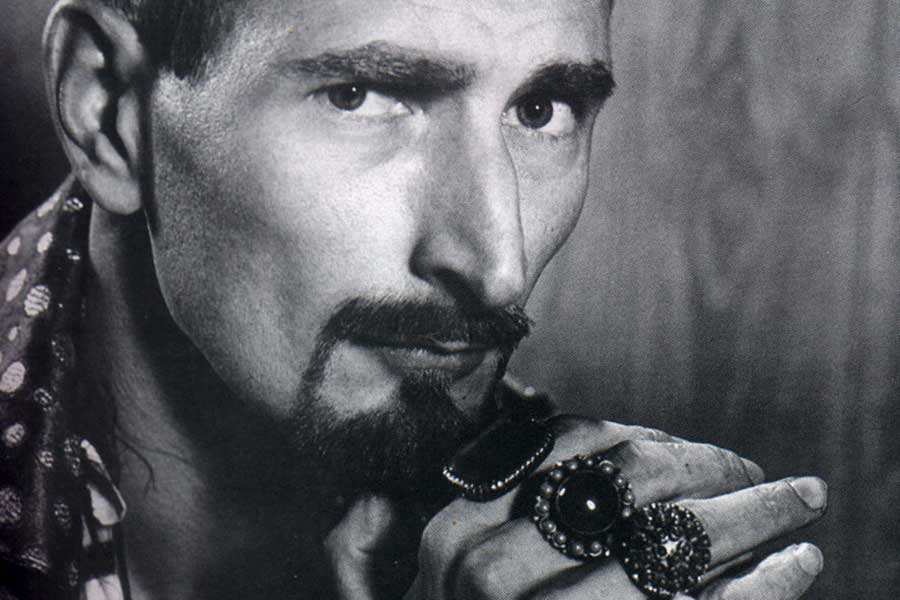In the coming weeks, International House is featuring several important — and, in some cases, rare — films by LGBT filmmakers. From avant-garde and experimental shorts from the 1960s to an under-seen documentary from the 1980s to new and recent character studies, there is something for everyone this winter.
On Jan. 23, there will be a presentation of three short films made between 1965-68 by the late, great low-budget queer filmmaker George Kuchar: “Corruption of the Damned,” “Eclipse of the Sun Virgin” and “Knocturne.” All three shorts display Kuchar’s campy, homemade aesthetic, which was typical of the underground film scene of the time. “Eclipse of the Sun Virgin,” in particular, is kitschy, full of bright, saturated colors and shot in a bewitching, mock-melodramatic style.
On Jan. 24, I-House presents the Philadelphia premiere of “Stray Dogs,” the latest work by masterful out filmmaker Tsai Ming-Liang. This minimalist, at times spellbinding, drama concerns a father (Lee Kang-Sheng, the filmmaker’s muse and coconspirator) who wants to provide for his two kids. He earns money by holding an advertising sign on the street, and Ming-Liang shoots several lengthy, excruciating shots of him standing in the rain. The director, who uses water as a symbol for love in his films, makes this motif emotionally palpable here.
However, “Stray Dogs” does require extraordinary patience from viewers — especially during a sequence with a cabbage.
On Jan. 31, two back-to-back programs hosted by Jerry Tartaglia will celebrate the work of late queer performance artist and filmmaker Jack Smith.
Because Smith’s work was not available for preview, Tartaglia spoke about the filmmaker in a recent phone interview.
“Smith creates a magic, and it’s a magic of transformation. If a filmgoer is attentive and patient, and remains present and attentive with his films, they experience some of that magic,” he said.
The program includes “Midnight at the Plaster Foundation,” which Tartaglia explained “is the only complete [film] of one of Smith’s live performances. I will play live musical accompaniment using his vinyl LP collection. His whole aesthetic was to create an environment that is open to catastrophe.”
The “Gems, Clips and Shorts” segment of the program features rarely seen archival materials. Tartaglia chose these because “each one is a complete cinematic, visual idea. One is included because Tally Brown is in it and there are so few images of Brown.”
While Tartaglia acknowledged that Smith and his work were not well-received by the gay or art communities back when they were made, they remain interesting and important curios.
“For people who are looking for a literal message or positive comments about queer identity, they will have to work at interpreting this work in the context of history.”
This winter, International House is also honoring African-American cinematographer Bradford Young, who shot the films “Selma” and “A Most Violent Year,” which are currently in theaters. The tribute provides another opportunity to see his remarkable work in lesbian writer/director Dee Rees’ excellent 2011 coming-out story, “Pariah,” on Feb. 4.
In this landmark drama, Alike (Adepero Oduye) is a teenage lesbian who is out to her best friend, Laura (Pernell Walker), a butch high-school dropout, but almost no one else. Alike’s religious mother, Audrey (Kim Wayans), suspects her daughter is a lesbian — “I’m tired of [her] tomboy,” she laments ,and hopes her daughters will “change.”
Although Alike is anxious to explore her sexuality, she is also afraid. A friendship that develops into a romance helps Alike express her true self — cautiously at first, and then completely. “Pariah” effectively represents this maturation visually as well. The film’s early scenes are hazy and blurry but over the course of Alike’s coming of age, they become sharper as she finds clarity. Young justly won a prize for cinematography at Sundance.
On Feb. 5, late gay filmmaker Howard Brookner’s 1983 documentary, “Burroughs,” will screen, commemorating its subject’s 101st birthday. An affectionate portrait of the famous Beat-era writer, the film opens with Burroughs’ appearance on “Saturday Night Live,” one of the many fascinating scenes in the film of him reading his work. Brookner chronicles Burroughs visiting his childhood home in St. Louis, and reminiscing with his brother and son, as well as his Beat colleagues, like Allen Ginsberg. The interviews and photographs are seamlessly woven together, as stories are recounted about drugs, about Burroughs assembling his literary “cut ups” and the infamous “William Tell” stunt in Mexico, in which he accidentally shot his wife. “Burroughs” is a fine portrait for both fans of the author and those unfamiliar with his life and work.
And for anyone interested in seeing the film adaptation of Burroughs’ provocative novel, “Naked Lunch,” International House will be screening David Cronenberg’s 1991 film Feb. 13 as part of Exhumed Films’ Cronenberg Triple Feature.
For more information, visit www.ihousephilly.org.

